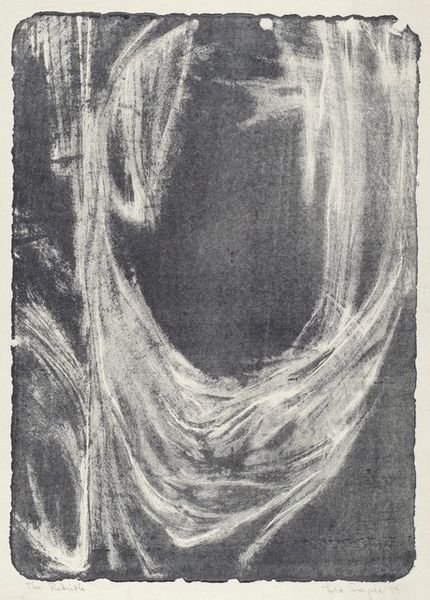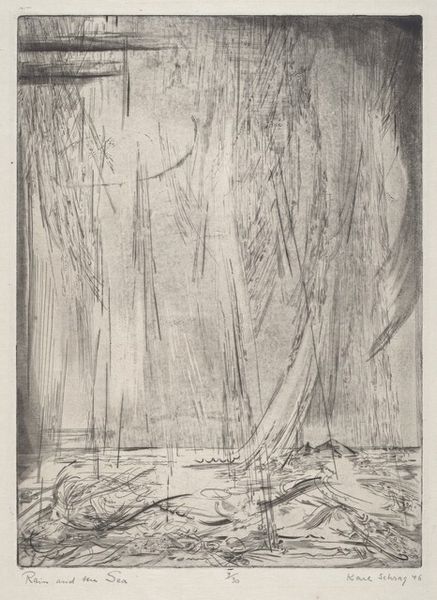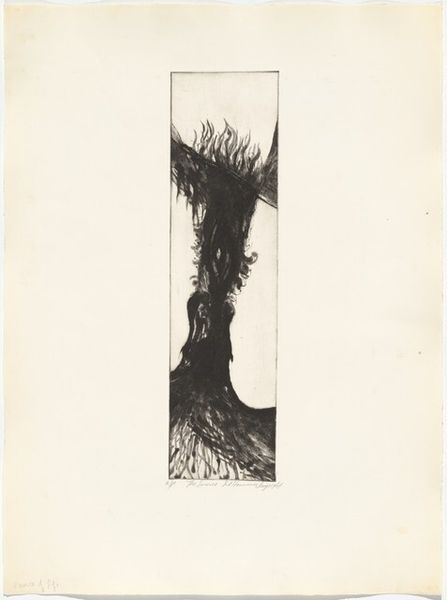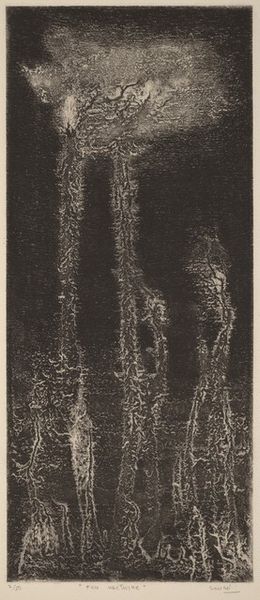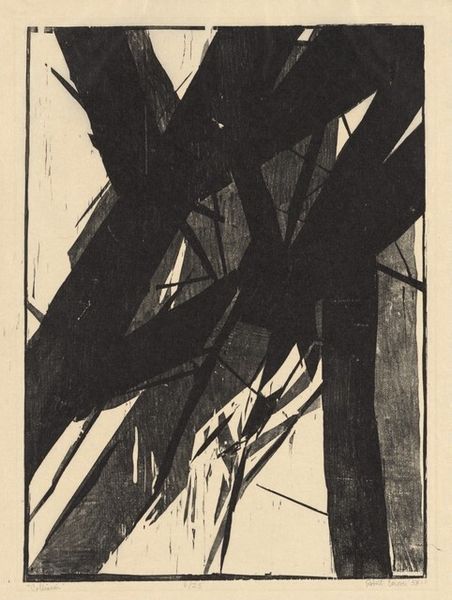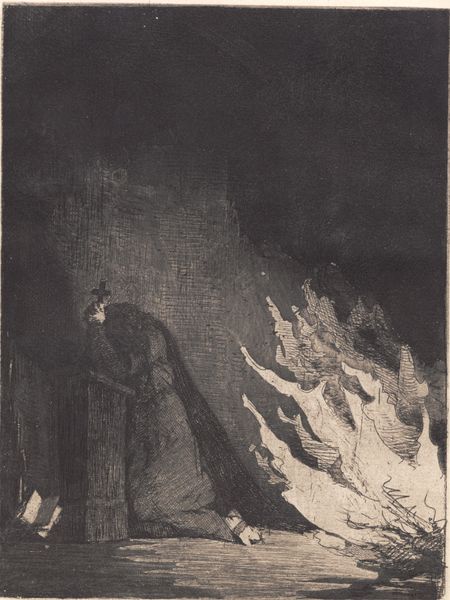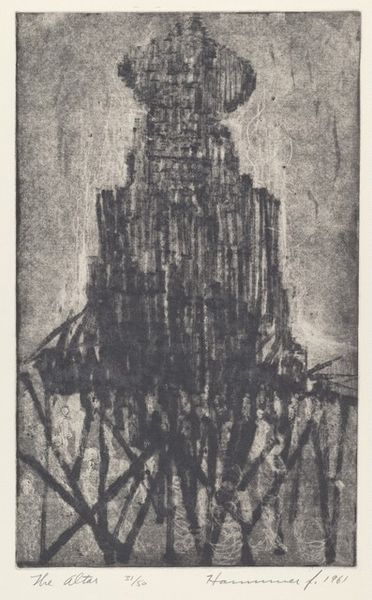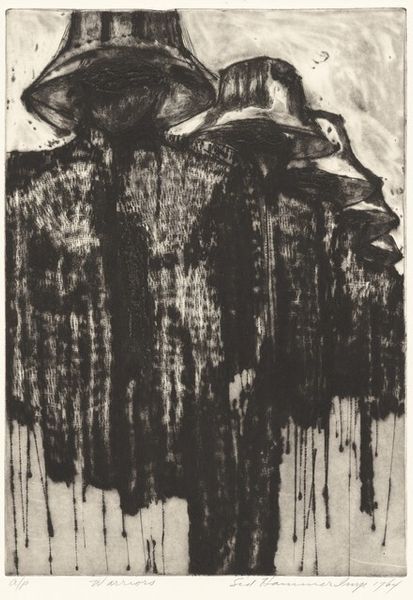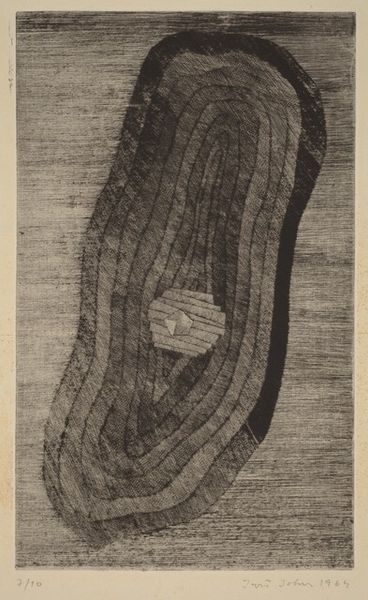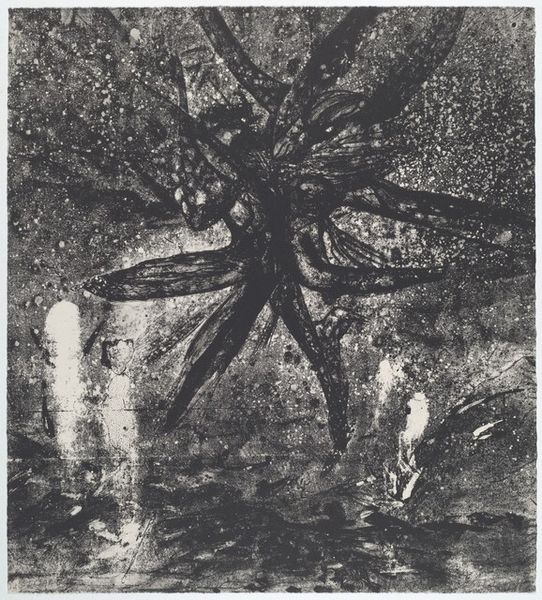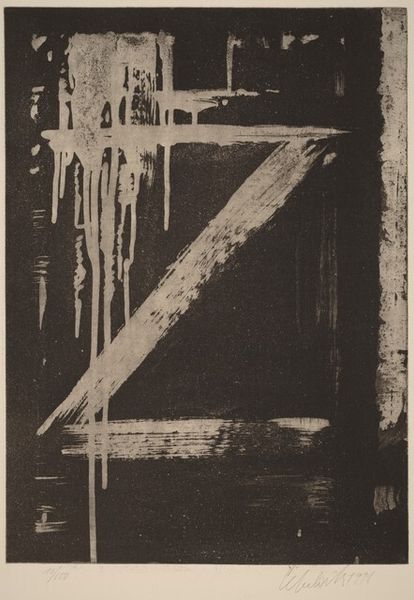
print, woodcut
#
organic
# print
#
organic shape
#
landscape
#
form
#
woodcut
#
line
Dimensions: plate: 49.1 x 34.9 cm (19 5/16 x 13 3/4 in.) sheet: 66 x 46.5 cm (26 x 18 5/16 in.)
Copyright: National Gallery of Art: CC0 1.0
Curator: Here we have Ladislav Cepelák’s "Strom (Tree)," a woodcut print created in 1992. What’s your initial take on this striking image? Editor: It feels...stark. The sharp contrast between the light trunk and the dark, almost suffocating background creates a mood of both strength and vulnerability. You immediately feel the raw materiality of the woodcut itself. Curator: Indeed. Cepelák, particularly in his print works, consistently investigated the tensions between organic form and graphic line. Consider, in this case, the historical context. In post-Soviet art, we see a prevalence of stark visual languages grappling with identity and place. How do we read "tree" in that intersectional conversation? Editor: The vertical lines give a real sense of growth, upward struggle... but those same lines, rendered by the woodcut technique, reveal their artificiality, almost as a mask. The materiality here feels integral to its statement. Curator: Precisely. The "tree" becomes less about nature and more about construction. The very act of carving that wood—that's labor; that’s social context materialized. Do we interpret those sharp lines of the trunk as confinement, growth, or perhaps something altogether new emerging from both? Editor: And the negative space! The rough gouges into the wood around the image feel as considered as the lines that create the form. The choices Cepelák made during the act of creation have incredible bearing on how we, as viewers, understand the form as representative of this specific organic matter, "tree." Curator: Yes, we can apply material studies to better grasp Cepelák’s vision here. What does it mean for this particular landscape, and even the identity associated with its place, to be depicted through a form carved by human agency? What emerges is a powerful, politically-charged aesthetic. Editor: It changes your understanding entirely. Considering the printmaking process as both physically demanding and representative of broader labor practices transforms how we receive the image. It no longer only represents an idea but shows the human hand in that expression. Curator: A powerful lens for understanding its layers. The combination of material and metaphor truly brings depth to the viewing experience. Editor: Absolutely. Analyzing Cepelák’s process illuminates the many conceptual and aesthetic implications woven into “Strom (Tree)".
Comments
No comments
Be the first to comment and join the conversation on the ultimate creative platform.
